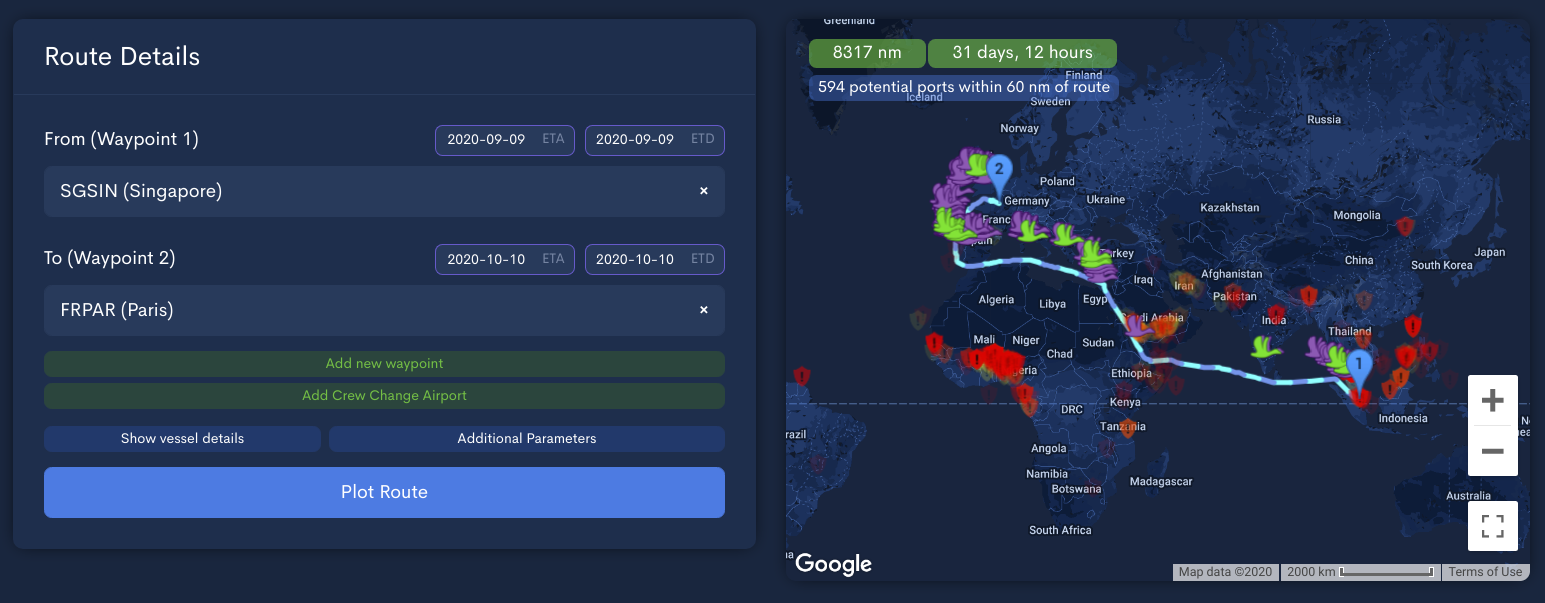
Removing hurdles to decision making through data

Hrishi Olickel
Published on 9th Sep 2020
4 minutes read
I've written before about how technology can be great at augmenting human performance, by performing tasks that are better suited to machines and providing actionable intelligence that would have taken hours or days to compute. It is with this mandate that we build proximity port finding, that searches for ports within range of a vessel's route that are better suited for crew changes, real-time geofencing for vessels, for tax and risk tracking, as well as the tagging features on Greywing that allow crew managers to work together over large fleets.
Greywing now automatically calculates bunkering costs for route deviations, directly from the report. It is in this vein that I am happy to introduce the latest feature: Greywing automatically calculates bunkering costs for route deviations, directly from the report.
We periodically update fuel consumption tables from our customers (shown below), that include wind estimation, speeds, RPMs and the current status of the vessel. Each vessel can have as much or as little detail is available, and this is used to estimate the final consumption.

The routes are also calculated to include suggested deviation. Previously, we used the direct distance to a port from the route as the deciding metric. With the new system, ports are integrated into the route to find expected deviation, which can provide a more accurate measure of cost.
Let's look at an example. Here I have a vessel moving from Singapore to Paris (a route I often take when testing our system - I've visited Paris more times than I think I'll ever visit anywhere by now). Greywing has identified 594 potential ports for a crew change, which have either opened up restrictions or are currently conducting crew changes.

The green wings represent ports with relaxing restrictions and past crew changes in the last month, the purple for ports that haven't had a crew change but are indicated as open, and orange for ports that now look to be closed but have recently conducted crew changes. Let's pick a green port.

It looks like Port Said has some options, and has conducted 40 crew changes so far. I can scroll down to find out the nationalities and types of these crew changes to see if this is compatible with my vessel, but now I can also click on Get Bunkering Estimate to watch the magic happen.

In less than a second, I have information about the proper deviation that this port represents (which is 15 nautical miles even though the port is only 9.35 nautical miles away from the path of the vessel), and how much fuel I can expect to consume at my current speed for this leg of the journey.
The expected speed and new route are calculated, the fuel tables are consulted, and the fuel cost is displayed - all in less than a second.
This is a good example of the problems that we work on at Greywing. In order to answer the relevant question - what will this deviation cost me? - a crew manager needs to talk to a route planner first, to find out exactly what the deviation will cost in distance once it is plotted in. Then the fuel tables must be retrieved and consulted, to calculate in the bunker consumption for said distance. This must be then done for all the possible ports of call, to find the best solution.
This is a process that takes hours, if not days. By providing this information in real-time, immediately upon request, a crew manager can quickly evaluate the suitability of a port for crew change, in a few button presses. We process all the information about the vessel, her crew, the nationalities on board, their home airports, the current route, port restrictions around the world, flight availability, past crew changes and a hundred other variables to answer the simple question:
Where can I send my vessel to change her crew, with minimal impact to my company? We'd like to work with you to make answering this question easier. If you think this is worth solving, and that we're the right team to do it, we'd love for you to get in touch.
Want to stay updated on all things AI we're building for Maritime? Sign up to our monthly newsletter here.

We release every week.
Learn about new tech in maritime, and what we've built as soon as it's live.